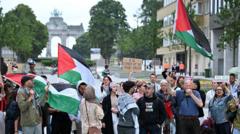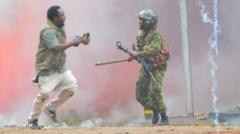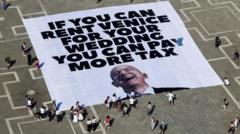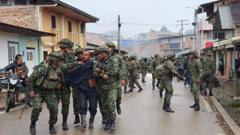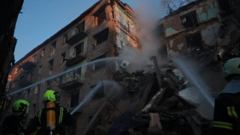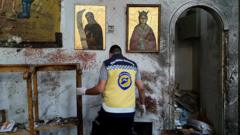Following widespread demonstrations against police brutality and corruption in Kenya, human rights organizations report a death toll of at least 16. The protests saw thousands rallying as the country experiences ongoing tensions related to governance and economic struggles.
Rising Clashes in Kenya: Death Toll Amid Protests Reaches 16

Rising Clashes in Kenya: Death Toll Amid Protests Reaches 16
Protests against government corruption erupt throughout Kenya, resulting in rising fatalities and clashes with security forces.
In recent days, the streets of Nairobi have served as the backdrop for escalating tensions between protesters and government forces. A prominent human rights organization has confirmed that at least 16 individuals have died as a result of the violent clashes that erupted on Wednesday, incited by widespread calls against police brutality and pervasive corruption within the Kenyan government. The demonstrations saw thousands of citizens taking to the streets, waving Kenyan flags and chanting demands for President William Ruto’s resignation.
Amnesty Kenya's executive director, Irũngũ Houghton, reported that many fatalities resulted from gunshot wounds, including the tragic death of a security guard positioned at a local power company. Meanwhile, reports indicate that over 400 protesters sustained injuries, with more than 80 suffering serious wounds requiring urgent medical attention.
Amidst the unrest, law enforcement has escalated its response, deploying live ammunition, rubber bullets, and tear gas against demonstrators. The Independent Police Oversight Authority noted that at least 61 individuals were arrested during the unrest, which spread to nearly half of the nation’s counties.
The violence has not only disproportionately affected protesters; local media have documented instances of police stations being set ablaze and shops looted across several regions. As the situation in Nairobi begins to transition, many businesses are reopening under the remnants of a heavy security presence, though some shopkeepers remain reticent to discuss the protests for fear of government backlash.
In an effort to suppress the demonstrations, the Kenyan government restricted live coverage by various media outlets and imposed constraints on messaging platforms, which has drawn fierce criticism from both media organizations and human rights advocates. A petition contesting the radio and television blackout subsequently led to a suspension of the government's restrictions.
The protests mark the anniversary of last year’s demonstrations that resulted in a significant death toll and harrowing accounts of abductions and torture among protesters. Despite government claims of returning abductees to their families, ongoing frustrations regarding unemployment, rampant corruption, and police violence have left many Kenyans disillusioned.
The persistent unrest highlights the deepening fractures within Kenyan society, as citizens grapple with the repercussions of years of political turmoil.
Amnesty Kenya's executive director, Irũngũ Houghton, reported that many fatalities resulted from gunshot wounds, including the tragic death of a security guard positioned at a local power company. Meanwhile, reports indicate that over 400 protesters sustained injuries, with more than 80 suffering serious wounds requiring urgent medical attention.
Amidst the unrest, law enforcement has escalated its response, deploying live ammunition, rubber bullets, and tear gas against demonstrators. The Independent Police Oversight Authority noted that at least 61 individuals were arrested during the unrest, which spread to nearly half of the nation’s counties.
The violence has not only disproportionately affected protesters; local media have documented instances of police stations being set ablaze and shops looted across several regions. As the situation in Nairobi begins to transition, many businesses are reopening under the remnants of a heavy security presence, though some shopkeepers remain reticent to discuss the protests for fear of government backlash.
In an effort to suppress the demonstrations, the Kenyan government restricted live coverage by various media outlets and imposed constraints on messaging platforms, which has drawn fierce criticism from both media organizations and human rights advocates. A petition contesting the radio and television blackout subsequently led to a suspension of the government's restrictions.
The protests mark the anniversary of last year’s demonstrations that resulted in a significant death toll and harrowing accounts of abductions and torture among protesters. Despite government claims of returning abductees to their families, ongoing frustrations regarding unemployment, rampant corruption, and police violence have left many Kenyans disillusioned.
The persistent unrest highlights the deepening fractures within Kenyan society, as citizens grapple with the repercussions of years of political turmoil.

